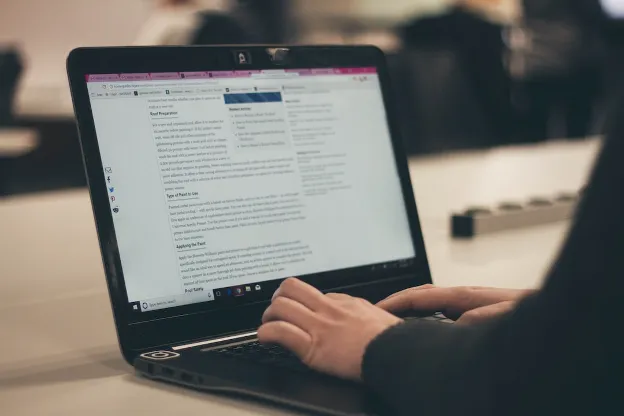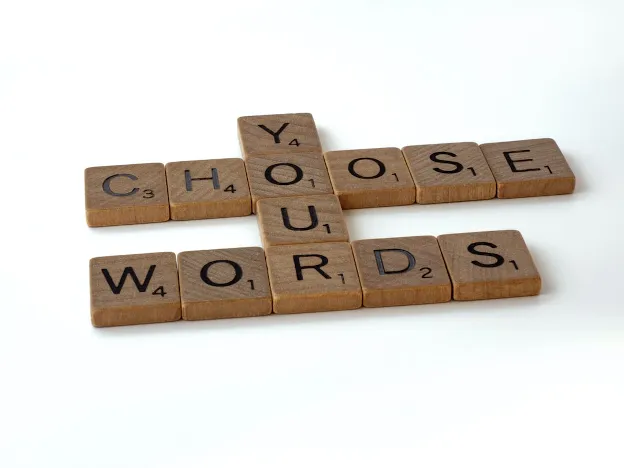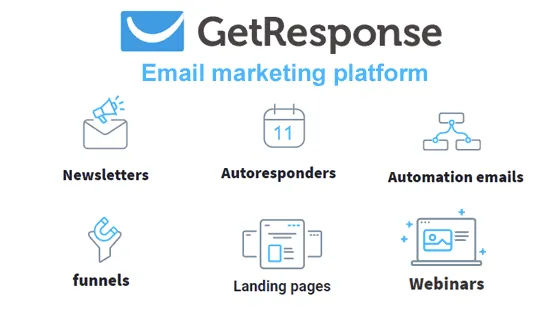Unlocking the Secrets to Writing Effective Business Emails

-
How to Define Your Email Goals
-
How to Write an Email
- 1. Use a professional email address.
- 2. Have a compelling subject line.
- 3. Start with an appropriate greeting.
- 4. Have a strong attention grabber.
- 5. Keep your message concise.
- 6. Be consistent with your font.
- 7. Check the tone of your message.
- 8. Write a simple closing.
- 9. Use a professional signature
- 10. Practice email etiquette for each work situation.
- 11. Use CC and BCC fields wisely.
- 12. Schedule your emails.
- 13. Do a final spelling and grammar check.
- 14. Schedule a follow-up reminder.
-
Four key questions:
-
Who is my audience?
-
Use a Email Service Provider like GetResponse
-
Frequently Asked Questions:
-
How can I ensure that my business emails are clear and concise?
-
What are some common etiquette rules to follow when writing business emails?
-
What are the 5 C's of effective email writing?
-
How can a free email service like GetResponse Help?
-
Conclusion
Disclosure: Some of the links in this article may be affiliate links, which can provide compensation to me at no cost to you if you decide to purchase. This site is not intended to provide financial advice and is for entertainment only.
In today's fast-paced business world, effective communication is key. And one of the most common forms of communication in the professional setting is through emails. But how do you ensure that your business emails are not only read but also have the desired impact? In this blog, we will unlock the secrets to writing effective business emails that capture attention and get results.
We will start by defining your email goals and understanding what you want to achieve with each message. Then, we will delve into the art of writing an email, covering everything from having a professional email address to using a compelling subject line and greeting. We will also explore important elements like attention grabbers, concise messaging, consistent font usage, and checking the tone of your follow-up email message.
But that's not all. We will share practical tips on writing a simple closing, using a professional signature, and even leveraging AI for drafting your emails. Plus, we'll discuss email etiquette for different work situations and how to use CC and BCC fields wisely. And don't worry about forgetting follow-ups or making spelling mistakes—we've got you covered there too.
So if you're ready to take your business email game to the next level, keep reading. Your inbox—and your recipients—will thank you for it!
How to Define Your Email Goals
When it comes to writing effective business emails, it is essential to define your email goals. Defining your goals allows you to determine the purpose of your email, whether it is to inform, persuade, or request something. Additionally, it is crucial to consider your target audience and tailor your message accordingly, ensuring that it resonates with the recipients. Catch the attention of your readers with a clear and concise subject line, while a strong opening engages them and clearly states the purpose of the email. Utilize proper formatting techniques, including bullet points and paragraphs, to ensure your email is easy to read. Maintain focus in your message, avoiding unnecessary information or rambling that may distract your readers. If you want to learn more about effective business communication, you can find valuable resources on LinkedIn.
How to Write an Email
When crafting effective business emails, it's crucial to pay attention to certain key elements that will help improve your communication. Begin by using a compelling subject line that captures the reader's attention. Maintain a professional tone in your message, avoiding any informal or slang language. Keep your email concise and on point, utilizing short paragraphs and bullet points if required. Pay careful attention to your grammar, spelling, and punctuation to maintain a sense of professionalism. Personalize the email by addressing the recipient by name and referencing any previous interactions. Lastly, clearly communicate your purpose or request in the body of the email.
1. Use a professional email address.
When it comes to effective business communication, using a professional email address is key. Make sure your email address reflects your professional identity by using your full name or a variation of your business name. Avoid using personal or unprofessional email addresses as they can create a negative impression. It may be helpful to create a separate email account dedicated solely to business purposes. By doing so, you ensure that your email address is clear and easy to understand, without any unnecessary symbols or numbers. Using a professional email address will establish credibility and professionalism in your correspondence with clients, colleagues, and other business contacts.
2. Have a compelling subject line.
To unlock the secrets of writing effective business emails, you must pay special attention to the subject line, which serves as the opening sentence. Crafting a compelling subject line is crucial for increasing the chances of your email being opened and read. Be concise and specific, avoiding generic phrases that may not grab the recipient's attention. Instead, use keywords that resonate with their needs and interests, such as a great subject line. When appropriate, personalize the subject line by mentioning the recipient's name or referring to a previous conversation. Remember, your subject line is your first impression, so make it count.
3. Start with an appropriate greeting.
When initiating an email, it is crucial to commence with an appropriate greeting. This initial greeting sets the tone for your communication and establishes a sense of professionalism. Opt for a polite and professional salutation such as "Dear [Recipient's Name]," or "Hello [Recipient's Name]." It is imperative to adapt the greeting to match the level of formality required by your industry and the nature of your relationship with the recipient. Steer clear from excessively casual greetings like "Hey" or "Hiya" in formal business emails. If you are uncertain about the recipient's gender or name, employ a neutral greeting like "Dear Hiring Manager" or "To Whom It May Concern." Always remember that the greeting serves as the first impression, so ensure it leaves a positive impact.
4. Have a strong attention grabber.
To create a strong attention grabber in your business emails, it's crucial to captivate your reader from the start. Begin with an engaging subject line that conveys the email's purpose. Personalize your message by using the recipient's name and adopting a friendly, yet authoritative, tone. Keep your email concise and focused on the core objective or request. Ensure your language is professional and avoid any informal expressions or slang. Prior to hitting send, always proofread to eliminate spelling and grammar mistakes, as they can undermine your credibility.
5. Keep your message concise.
A key aspect of writing effective business emails is maintaining concise messaging. It's important to avoid overwhelming recipients with unnecessary details or lengthy paragraphs. Instead, convey your main point using clear, direct language. Breaking up your email into shorter paragraphs or bullet points enhances readability. Remember that professionals often receive a high volume of emails, so brevity is appreciated. By focusing on concise messaging, you can avoid information overload and increase the likelihood of your email being read and responded to promptly.
6. Be consistent with your font.
Maintaining consistency in font choice is crucial when composing effective business emails. It plays a significant role in establishing a professional appearance for your correspondence. Begin by ensuring you use a professional email address and subject line that clearly conveys the purpose of your email. Additionally, start your message with a courteous greeting and address the recipient by their name whenever possible. Keep the content concise and succinct, employing clear and straightforward language. Enhance readability by incorporating well-structured paragraphs and bullet points. Lastly, before sending, be sure to carefully proofread your email to catch any potential grammar or spelling mistakes.
7. Check the tone of your message.
Crafting an effective business email goes beyond the content itself. The tone of your message plays a pivotal role in conveying your intentions and meeting your goals. It's essential to maintain a professional and courteous tone that commands respect and reflects your expertise. Regardless of the situation, avoid using overly formal or casual language, as it might undermine your professionalism. Instead, strike a balance that aligns with the recipient's level of familiarity. Remember, your choice of words shapes your perception, so proofread your writing to eliminate any potential rudeness or disrespect. Deliver your message with authority and confidence, leaving a lasting positive impression.
8. Write a simple closing.
When it comes to writing effective business emails, the closing is a crucial element. It serves as the finish line for your message, leaving a lasting impression on the recipient. Therefore, it is important to choose your closing carefully. Opt for a closing that aligns with the tone and formality of your email, such as "Sincerely," "Best regards," or "Thank you." By selecting a suitable closing, you convey professionalism and courtesy. Remember to include your name and contact information after the closing, ensuring that the recipient can easily get back to you.
9. Use a professional signature
Adding a professional email signature is one of the key elements in writing effective business emails.
Your signature should include your full name, job title, and contact details to establish credibility. Opt for a clean and professional design, avoiding fancy fonts or colors that may distract from the message. By including relevant links to your website or social media profiles, you can provide additional information about your business. Consider adding a brief personal touch to make your signature memorable. Remember that a well-crafted email signature enhances your professionalism and helps create a lasting impression. Additionally, make sure to leave enough white space in your signature to maintain a clean and organized appearance.
10. Practice email etiquette for each work situation.
Developing good etiquette is crucial for effective business communication. Whether you're corresponding with a colleague, client, or supervisor, adhering to proper email etiquette can make a positive impression and ensure clear communication.
To ensure professionalism, start with a courteous greeting like "Hello" or "Dear," followed by the recipient's name. Use concise language to effectively convey your message and avoid slang or informality. Organize your email by breaking up long paragraphs into shorter chunks and utilizing bullet points or numbered lists when necessary. Maintain a polite and respectful tone throughout your message. Before sending your email, always proofread for grammar and spelling errors. Lastly, include a closing phrase like "Best regards" along with your name and contact information. Following these best practices will enable you to compose effective business emails.
11. Use CC and BCC fields wisely.
When it comes to writing effective business emails, a key aspect to consider is the wise use of CC and BCC fields. The CC (carbon copy) field serves the purpose of keeping multiple people in the loop of the conversation. It allows you to ensure that all relevant recipients are informed and involved. On the other hand, the BCC (blind carbon copy) field provides the option to send a copy of the email to someone discreetly, without the knowledge of other recipients. However, it is essential to exercise caution and use these fields sparingly to avoid cluttering inboxes and creating confusion among recipients. It is advisable to double-check your recipient list before hitting the send button to prevent any embarrassing or unintended situations.
12. Schedule your emails.
Strategically scheduling your emails can greatly enhance your business correspondence. By carefully timing the delivery of your emails, you ensure that they have the greatest impact and are noticed by your recipients. Take into account the time zone of your audience and schedule your emails to arrive during their working hours. This ensures that your messages are more likely to be seen and responded to promptly. Avoid the temptation to send them late at night or over the weekend, as they may get lost in the shuffle of incoming messages. Instead, focus on delivering your emails during the times when they are most likely to be read and acted upon. Experiment with different send times to optimize your response rates and adapt your email communication for maximum effectiveness. By mastering the art of scheduling your emails, you can elevate your business communication and achieve better results. There a automation tools out there that can GREATLY simplifying this. I personally have used quiet a few and have now settled on GetResponse.
13. Do a final spelling and grammar check.
Before sending any business email, it is crucial to dedicate time to conduct a thorough spelling and grammar check. By implementing this crucial step, you can guarantee that your communication appears professional, polished, and error-free.
Take advantage of spell check tools which will promptly identify any potential spelling errors present within the email. It is critical to pay attention to punctuation, capitalization, and sentence structure, ensuring that your message is coherent and easy to comprehend for the recipient. In order to gain a fresh perspective, read your email aloud and request feedback from a trusted colleague or acquaintance. Moreover, ensure that you validate the accuracy of all proper names, titles, and any other specific details pertinent to the email's content. Adopting this meticulous approach will empower you to provide accurate and impeccable business correspondence.
14. Schedule a follow-up reminder.
Setting a follow-up reminder is a key aspect of writing effective business emails. By utilizing email tools and calendar apps, you can stay organized and ensure that important tasks or requests are not overlooked. Remember to schedule your reminders at an appropriate time, considering deadlines and the urgency of the email. Being specific in your reminder, mentioning the email's purpose and any necessary actions, helps maintain effective communication and professionalism. Incorporating follow-up reminders into your email workflow enhances productivity and ensures that important requests are not forgotten.
Four key questions:
Crafting Effective Business Emails: Four Key Questions to Ask Yourself
When it comes to writing effective business emails, it's essential to ask yourself four key questions. By answering these questions thoughtfully, you can ensure that your words are professional, impactful, and well received.
1. What is the purpose of your email?
Before you start writing, clearly define the purpose of your message. Are you conveying information, seeking clarification, or making a request? Knowing your objective will help you structure your email and set the right tone.
2. Who is your audience and what tone should you use?
Consider who your audience is and adapt your writing style accordingly. Are you writing to your boss, a colleague, or a potential client? Tailor your tone to suit their expectations and the level of formality appropriate for the situation.
3. How can you structure your email for clarity and impact?
Organize your thoughts in a clear and concise manner to ensure your message is easily understood. Use bullet points or subheadings to break up long paragraphs and highlight important information. Make sure each paragraph focuses on a specific point and flows logically from one to the next.
4. What are some common mistakes to avoid in business correspondance writing?
Avoiding common mistakes will help you maintain professionalism and avoid misunderstandings. Pay attention to spelling and grammar errors, as well as punctuation and sentence structure. Double-check names, titles, and other specific details for accuracy. Proofread your work before hitting send to catch any mistakes or awkward phrasing.
By answering these four key questions, you'll be well on your way to writing effective business emails that make a lasting impression.
Who is my audience?
When sending business emails, your audience will differ depending on the it's purpose. Identify the individuals or groups you're addressing and consider their familiarity with the topic. Adjust your tone and language accordingly to effectively communicate and achieve your desired outcome.
Use a Email Service Provider like GetResponse
Unlocking the secrets to writing effective business emails involves leveraging the power of an Email Service Provider (ESP) like GetResponse.
This renowned ESP offers a comprehensive suite of tools, revolutionizing the way businesses communicate. With GetResponse, you gain access to customizable templates, a user-friendly drag-and-drop editor, and automation features like autoresponders and triggered emails. Analyzing the success of your campaigns is made easy with their analytics and reporting tools. Furthermore, GetResponse's list management capabilities, including segmentation and personalization options, enable you to deliver targeted content to specific audiences, ensuring your emails make a lasting impact. Embrace GetResponse and elevate your business correspondence and/or marketing to new heights.
Frequently Asked Questions:
How can I ensure that my business emails are clear and concise?
To ensure your business emails are clear and concise, start with a subject line that clearly summarizes the purpose. Keep the message focused on one topic or request, using short sentences and paragraphs for readability. Always proofread for grammar and spelling before hitting send.
What are some common etiquette rules to follow when writing business emails?
To maintain proper etiquette when writing business emails, use a professional email address and a clear subject line. Keep the message concise, with correct grammar and spelling. Address the recipient formally unless an informal relationship has been established. Always include a polite greeting, closing, and express gratitude for their time.
What are the 5 C's of effective email writing?
The 5 C's of effective writing are clarity, conciseness, courtesy, coherence, and correctness. This means ensuring your message is easy to understand, being brief and to the point, using polite language, organizing your thoughts logically, and maintaining proper grammar and spelling for professionalism.
How can a free email service like GetResponse Help?
GetResponse is an email marketing platform that provides a variety of features to assist businesses in their email campaigns. It enables users to design professional emails using customizable templates and drag-and-drop editors. GetResponse offers tools for effective audience targeting through list management, segmentation, and personalization. Additionally, it provides automation features like autoresponders and drip campaigns to streamline email marketing efforts.
Conclusion
Writing effective business emails is crucial for professional communication. By following the tips discussed in this blog, you can ensure that your messages are clear, concise, and impactful. Remember to define your email goals, use a professional email address, and have a compelling subject line to grab the recipient's attention. Keep your message concise, use a consistent font and tone, and end with a simple closing and professional signature. Don't forget to proofread for spelling and grammar errors and schedule follow-up reminders when needed. Free services (depending on the size of your list) like GetResponse can make a huge difference in your speed and quality and can help alleviate a LOT of the common issues. If you like what you’ve read, sign up for our emails!
-
How to Define Your Email Goals
-
How to Write an Email
- 1. Use a professional email address.
- 2. Have a compelling subject line.
- 3. Start with an appropriate greeting.
- 4. Have a strong attention grabber.
- 5. Keep your message concise.
- 6. Be consistent with your font.
- 7. Check the tone of your message.
- 8. Write a simple closing.
- 9. Use a professional signature
- 10. Practice email etiquette for each work situation.
- 11. Use CC and BCC fields wisely.
- 12. Schedule your emails.
- 13. Do a final spelling and grammar check.
- 14. Schedule a follow-up reminder.
-
Four key questions:
-
Who is my audience?
-
Use a Email Service Provider like GetResponse
-
Frequently Asked Questions:
-
How can I ensure that my business emails are clear and concise?
-
What are some common etiquette rules to follow when writing business emails?
-
What are the 5 C's of effective email writing?
-
How can a free email service like GetResponse Help?
-
Conclusion
Disclosure: Some of the links in this article may be affiliate links, which can provide compensation to me at no cost to you if you decide to purchase. This site is not intended to provide financial advice and is for entertainment only.




